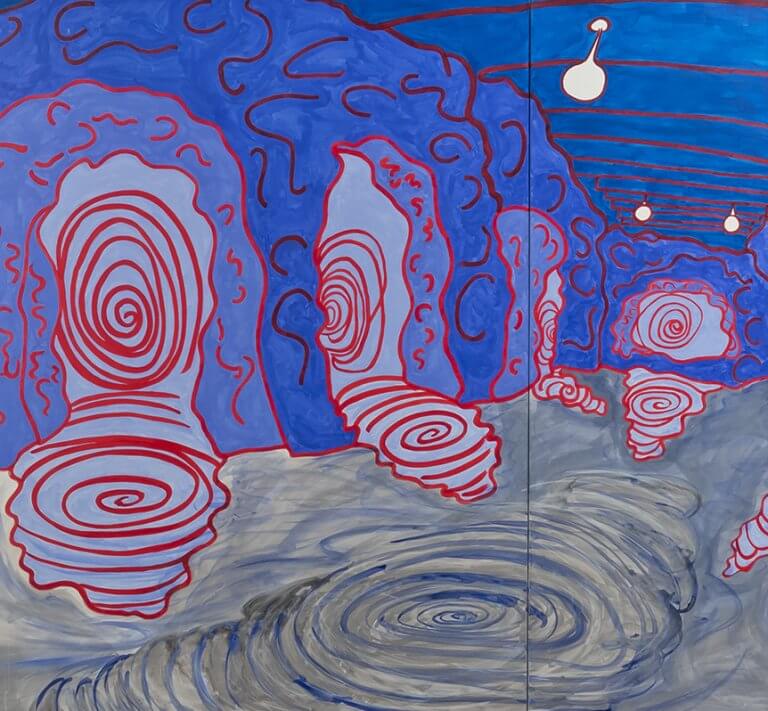
Sandra Meigs: The Basement Paintings

In 2012, overwhelmed by grief, Hamilton-based painter Sandra Meigs produced a series of four large-scale paintings that translated her emotional state following the death of her husband into an imagery of subterranean architecture. One of the inspirations for the work was her sister’s basement in New Freedom, Pennsylvania. She found in the claustrophic, disused space, in the arrangements of half-forgotten things, a scene she linked to her emotional state and to the processes of stasis and change that preoccupied her. She described the experience:
“To get into the basement there’s a small door and rickety stairs, the ceiling there is quite low, and incandescent lights hang down just by their wires, from the ceiling. I found the basement so beautiful, especially when it was lit that way…there’s random stuff piled on other stuff, with narrow walkways through. It’s kind of like being in a museum…[but deposited] through normal accumulation over 40 years.”
The approximately 500 photographs Meigs took in New Freedom became source material for a series of modestly scaled paintings, The Basement Piles, and a catalyst for the more monumental The Basement Panoramas, which are each based on real basements whose locations are named in their titles.
Basements, often filled with unsorted things we store for future use and collections of the residue of lives, ornamented by tangled systems of wiring, heating and plumbing, hidden from everyday existence above ground, can be read in these works as an architectural scenario analogous with the structures and processes of the unconscious mind. In Meigs’ paintings, the physical shape of the basement breaks down into vigorous spirals and swirling lines, spreading and layering and changing direction as if of their own accord. Frequently interspersed with charged text, The Basement Panoramas reflect on mortality and rebirth, the hidden drives that both animate us and hold us in their confining embrace. Alternating between exuberant, expansive colour and gesture, and nightmarish claustrophia and repetition, these works are a document of the will, as intensity, as persistence, and as escaping endlessly beyond our control.
-Pan Wendt, Curator


